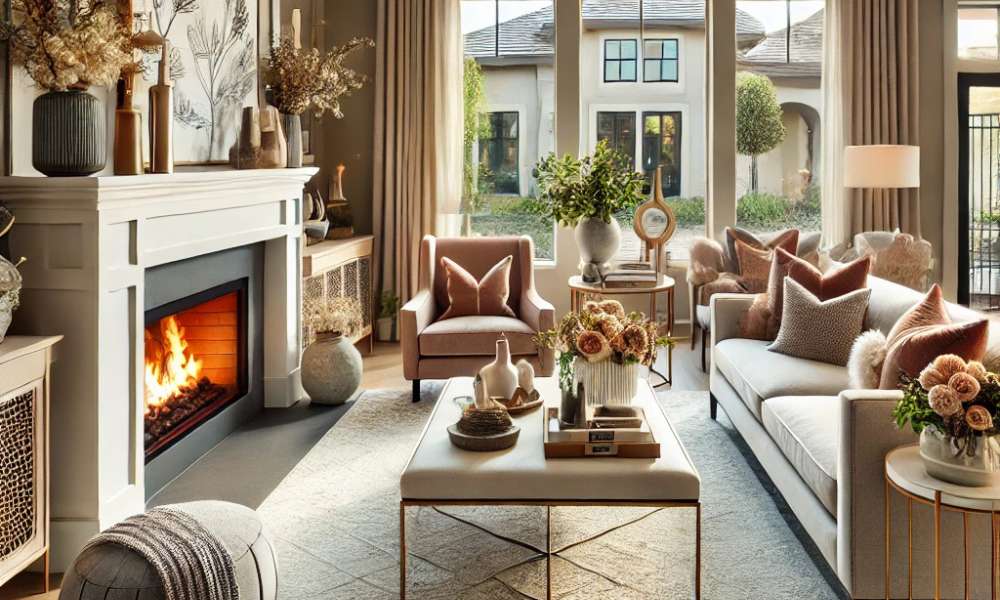How to stage a living room with fireplace effectively can transform a space into a warm and inviting haven. A well-staged living room not only enhances aesthetic appeal but also improves functionality and boosts property value. The fireplace naturally serves as the focal point, making it essential to create a layout that highlights its charm while maintaining a balanced and visually appealing space. Thoughtful furniture placement, carefully selected decor, and proper lighting can create an atmosphere of comfort and sophistication. Whether you’re preparing to sell your home or simply want a fresh look, staging a living room with a fireplace ensures a stylish, welcoming environment that maximizes both form and function.
Understanding the Fireplace as the Focal Point
A fireplace naturally draws attention, becoming the anchor of the living room. When staging, it’s essential to enhance this feature without allowing it to overpower the rest of the space. Maximizing the fireplace’s visual appeal through upgrades like painting the mantel, updating the surround, or adding decorative tile enhances its charm. Avoiding clutter and selecting a decor style that seamlessly blends with the fireplace ensures balance and sophistication in the space.
Decluttering and Preparing the Space
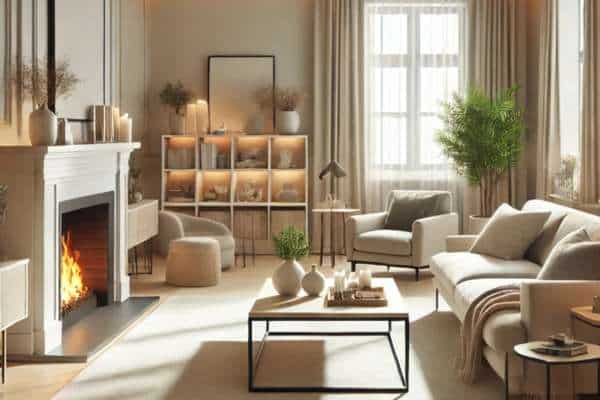
A clutter-free space instantly feels more inviting. Before staging, remove unnecessary items that detract from the fireplace’s prominence. Decluttering furniture and accessories prevents the room from feeling overwhelming, while maintaining the fireplace through regular cleaning and maintenance keeps it functional and attractive. A neutral color scheme provides a timeless and sophisticated look, allowing the fireplace to stand out without distractions.
Choosing the Right Furniture Layout
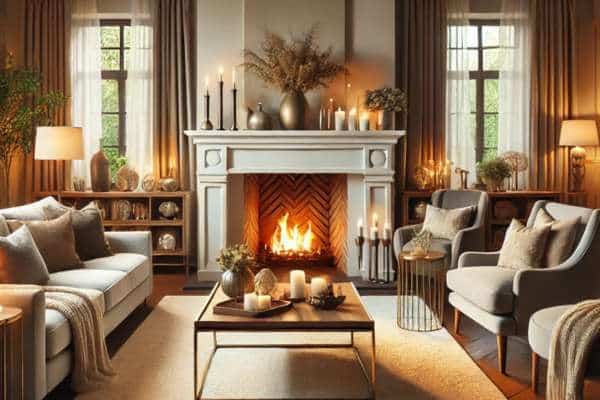
Furniture arrangement plays a crucial role in drawing attention to the fireplace while maintaining a comfortable flow. A symmetrical arrangement creates a balanced and formal aesthetic, while an asymmetrical layout fosters a relaxed, casual ambiance. Floating furniture away from walls and angling seating toward the fireplace encourages conversation and intimacy. Sectionals work well in larger spaces, while individual seating allows for greater flexibility in smaller rooms.
Optimizing Lighting for a Warm Ambiance
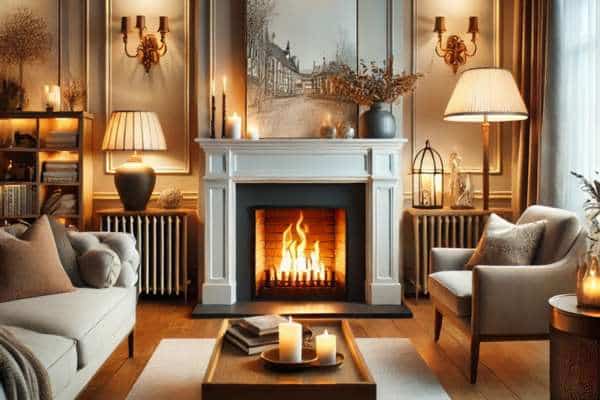
Lighting plays a significant role in setting the mood of a staged living room. Layering lighting with a mix of overhead, task, and accent lighting creates depth and warmth. Positioning table lamps and sconces strategically highlights the fireplace without causing glare or shadows. Maximizing natural light through sheer curtains or well-placed mirrors enhances the room’s brightness and overall appeal.
Decorating the Mantel for Visual Impact
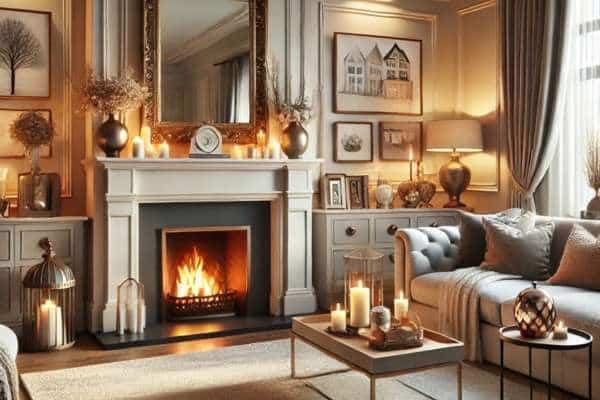
The mantel serves as an extension of the fireplace and should be styled with intention. A minimalist approach with a few statement pieces such as framed artwork, sculptural elements, or elegant vases keeps the mantel visually appealing without overwhelming the space. Mirrors above the mantel create the illusion of a larger room, while carefully arranged decor elements maintain a polished and cohesive look.
Using Rugs and Flooring to Define the Space
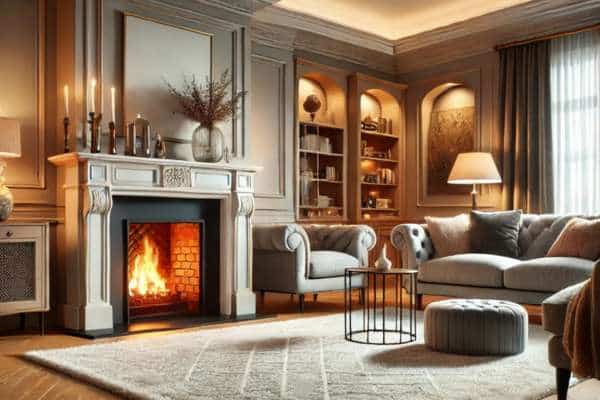
Flooring choices impact the cohesiveness of a staged room. The right rug size and placement anchor the furniture while complementing the fireplace. Choosing colors and textures that harmonize with the room’s overall palette enhances the space’s flow. Hardwood flooring exudes warmth, while neutral carpets or stylish tiles maintain a modern feel and highlight the fireplace.
Incorporating Cozy and Stylish Accessories
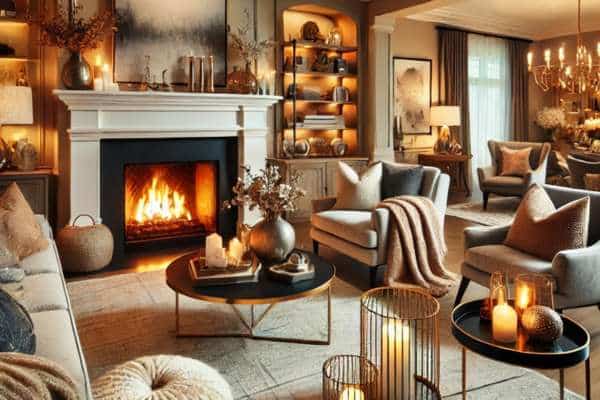
Thoughtful accessories enhance the atmosphere without overwhelming the space. Soft throw pillows and blankets add texture and warmth, while well-placed coffee tables and side tables provide both functionality and aesthetic appeal. Plants bring life to the room, and candles offer an ambient glow that enhances the coziness of the fireplace setting.
Staging for Different Seasons
A well-staged living room should feel seasonally appropriate. Winter staging incorporates cozy throws, rich textures, and warm lighting to create an inviting atmosphere. Spring and summer call for lighter fabrics, pastel tones, and fresh flowers to add an airy feel. In fall, earthy tones, rustic elements, and seasonal accents evoke a sense of warmth and comfort.
Common Mistakes to Avoid
Small details can make or break the staging process. Avoid overcrowding by keeping the arrangement spacious and functional. Sticking to a cohesive color palette and decor theme ensures the space feels harmonious. Checking traffic flow ensures that furniture placement allows for easy navigation and accessibility.
Conclusion
A well-staged living room with a fireplace creates an inviting and visually appealing space. By understanding the fireplace’s role as the focal point, arranging furniture strategically, and incorporating thoughtful decor elements, any living room can be transformed into a warm and stylish retreat. Staging not only enhances comfort but also boosts home value, making it a worthwhile endeavor whether selling or simply elevating your space.


